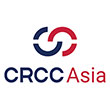Medical illustrator
Medical illustrators produce resources such as photography and graphic images for professionals involved in healthcare
Medical illustration is a specialist area of work made up of clinical photographers, medical videographers, medical graphic designers and medical artists. These roles support other healthcare professions and fall under the umbrella term healthcare scientist.
The images you create, as a medical illustrator, are used in patient care, teaching, education and research. Advanced technical ability and an understanding of anatomy are needed.
Types of medical illustration
The four specialist areas are:
- clinical photography
- graphic design
- medical art
- videography.
Photographers and video producers are involved with delivering visual records of patients' conditions, operations and treatments for medical files, education and research.
Graphic designers and artists create artwork for audiovisual lecture material, corporate publications, leaflets, posters and websites.
Responsibilities
The work varies according to the size of the hospital department or private company. A hospital department usually has several medical illustrators and perhaps one member of staff who specialises in video filming and production.
As a clinical photographer or videographer, you'll:
- take and process photographs or films of patients, often concentrating on just one part of the body that has been affected by illness or injury
- undertake more specialised photography, such as 3D imaging or using specialist cameras, to photograph the structures of a particular part of the body, e.g. the eye, photographing the lens, cornea and retina
- arrange the necessary consent from patients
- take photographs or films of medical equipment to be used by clinicians for teaching purposes
- photograph hospital personnel, buildings and events for use in publicity materials and use desktop publishing packages to produce materials, such as the hospital trust's newspaper or annual report
- specialise in specific areas of photography, e.g. bereavement photography (photographing babies that have been stillborn or have died shortly after birth for parents to keep in remembrance) or forensic photography (photographing 'non-accidental injuries', such as human bite marks)
- use computers to download, edit and process digital images or films, using software packages such as Adobe Photoshop and Illustrator, or Kodak Photo Desk
- manage and train staff at more senior levels.
As an artist or graphic designer, you'll:
- produce artwork and designs for posters and patient information leaflets
- create presentations, posters, illustrations and slides or overhead transparencies of patients and treatment procedures for use in lectures, conferences and medical journals
- use 3D illustration/animation software such as Maya, OsiriX or Zbrush
- design websites, such as hospital trusts' websites, for patients, doctors and the general public
- plan the layout for annual reports and other corporate material.
Salary
Pay and conditions for medical illustrators within the National Health Service (NHS) are covered by the Agenda for Change (AfC) pay rates, consisting of nine pay bands.
- Typical starting salaries for junior medical illustrators working in the NHS are between £23,949 and £26,282 (Band 4), rising to £27,055 to £32,934 (Band 5) with experience.
- Senior medical illustrators earn £33,706 to £40,588 (Band 6), while a head of department at a university teaching hospital or university medical or dental school can earn up to around £55,000.
There is more flexibility in university teaching hospitals' pay scales. Departments are usually larger, so senior staff have greater responsibility and higher salaries.
You can increase your income with freelance work in photography, illustration for medical books, or web design.
Income figures are intended as a guide only.
Working hours
The usual working pattern is 37 to 40 hours Monday to Friday, although you may be required to work additional hours from time to time.
There may also be a need to work some evenings on call, particularly in hospitals that provide emergency services.
Self-employment and freelance work are often possible, as are job-sharing and part-time opportunities.
What to expect
- You'll generally work in a team environment, liaising with other illustration staff and medical and healthcare professionals, as well as outside contacts, such as printers.
- As well as the technical side, you may work closely with patients, which might be distressing.
- If you specialise in photography, you'll spend much of your time working in departmental photographic studios. Graphic designers and medical artists are largely office-based with little or no interaction with patients.
- Jobs are available in most areas of the UK, wherever there are hospitals, but it's a specialist field and competition for posts is high.
- Illustrators, who do photographic work for a hospital trust, may have to travel to various hospital sites to photograph patients in wards, clinics or operating theatres.
Qualifications
You need a degree or HND to become a medical illustrator.
Relevant subjects include:
- clinical photography
- graphic design/illustration
- medical illustration.
Search postgraduate courses in medical illustration.
Clinical photographers need a degree in clinical photography and a postgraduate certificate in clinical photography.
Details of undergraduate and postgraduate courses are available at the IMI. If you have a degree in a different photographic discipline, for example from the British Institute of Professional Photography (BIPP), you can apply for a position as a trainee and take a one-year, graduate or postgraduate certificate in clinical photography while working.
The Institute of Medical Illustrators (IMI) offers membership for professionals and students embarking on their career.
Either route will involve practical experience and will make you eligible for professional membership of the IMI. You'll also be eligible for entry onto the register of the Academy for Healthcare Science (AHCS). This is a particular requirement for those working in close contact with patients.
Medical graphic designers, artists and web designers are expected to have a degree in design or another relevant media discipline. Some experienced designers transfer to the profession from the commercial sector.
Many videographers are qualified as clinical photographers and will gain registration through that route. Like clinical photographers, they work directly with patients and it's likely that registration in this field will be a requirement eventually for those who enter the profession by a different route.
Graduates with qualifications in graphic design, illustration or photography should aim to find an employer willing to allow them to study part time for a graduate or postgraduate degree in medical illustration.
Relevant courses include:
- Graduate and Postgraduate Certificates in Clinical Photography or Graphic Design for Healthcare Staffordshire University
- Postgraduate Certificate in Clinical Photography Cardiff University
- MSc in Medical Art and MSc in Forensic Art and Facial Identification University of Dundee
- MSc in Medical Visualisation and Human Anatomy, run jointly by The School of Simulation and Visualisation at The Glasgow School of Art and the School of Life Sciences at Glasgow University
- Postgraduate Programme in Medical Art Medical Artists' Education Trust, which leads to membership of the Medical Artists' Association of Great Britain (MAA)
- The MA in Medical and Biological Illustration Johns Hopkins School of Medicine in Baltimore, USA.
Skills
You'll need to have:
- a genuine interest in the scientific application of your skills and in the treatment of disease
- time management and organisational skills
- technical and creative or artistic ability
- attention to detail and a methodical approach
- a sensitive and tactful attitude, the ability to deal confidently with a range of people and quickly establish a rapport with patients or healthcare professionals
- an understanding of anatomy and biology
- IT literacy, as each specialism involves substantial work on computers, both Apple Macs and PCs
- a reasonable level of physical fitness, as you may be required to lift and carry equipment.
Work experience
You'll need a good portfolio of work with examples of clear, detailed images. See the BIPP for information about student membership - joining will make you eligible for Portfolio Reviews, as well discounts on training, support, networking and competitions. Approved course providers will arrange for you to send images to experts at the BIPP who will examine and comment on their suitability for your portfolio.
Pre-entry experience, such as a placement or project, perhaps as part of a degree course, would be very helpful, as would any experience of working in a caring capacity. Medical illustration is a small profession with a limited number of vacancies, so work experience can make you stand out to an employer.
It's a good idea to contact the medical illustration department in your local hospital to ask about visiting the department.
For free mentoring resources and experiences designed to support aspiring healthcare and legal professionals - including virtual work experience that is accepted by medical schools, see Medic Mentor.
Find out more about the different kinds of work experience and internships that are available.
Advertisement
Employers
You can work for any of the following employers:
- hospitals
- medical schools
- research establishments
- specialist publishers.
Around half of all medical illustrators are employed by hospital trusts - others work for university medical schools.
The larger departments are generally found in university hospitals, particularly in cities such as:
- Birmingham
- Cambridge
- Cardiff
- Glasgow
- London
- Oxford.
Some medical illustration departments have only a handful of staff or even just a single medical illustrator providing photography, graphic design and related services.
There may also be a limited number of posts in private hospitals and medical facilities, and with private companies that provide medical services or develop medical or pharmaceutical products.
Some medical photographers work entirely on a freelance basis.
Look for job vacancies at:
- British Journal of Photography
- Creative Review
- Design Week
- NHS Jobs
- NHS Scotland Recruitment
- Ophthalmic Imaging Association (OIA)
Look at individual hospital or medical school recruitment sites, web design studios and graphic art studios for freelance work.
Professional development
Most medical illustrators working for the NHS start on Band 5 of the Agenda for Change pay scale. You can expect to progress to the next grade within two or three years.
Graduates entering medical illustration departments start by gaining some experience on the job and then take further qualifications.
A programme of continuing professional development (CPD), which reflects the requirements of the Health & Care Professions Council (HCPC) is offered by the IMI.
As well as CPD, you'll benefit from maintaining a personal professional portfolio, making contacts and keeping up to date through professional bodies such as the BIPP, the IMI and the MAA.
Career prospects
Opportunities for specialisation and for promotion tend to be greater in universities and the NHS, making them attractive employers for senior-level medical illustration staff.
In hospital trusts, there is the potential to progress to the position of chief medical illustrator or head of department. As you move through the grades, your work will become more technically complex but won’t necessarily involve managing staff.
Private companies providing medical services and developing medical or pharmaceutical products also offer good progression opportunities.
Progression in all cases will depend on the employer and your own commitment to professional development.
Promotion will often depend on the size of the medical illustration department and prospects may be limited if you work in a small department. Relocation may be necessary to progress further.
Working freelance is an option and many medical illustrators undertake this once they've gained enough experience and contacts.
Alternative careers
Related jobs and courses




work experience
Computer Science and IT Engineering Internship
- CRCC Asia (6 other jobs)
- Unpaid
- Mumbai

